Hey there! This post may contain affiliate links. As an Amazon Associate, I earn a teensy commission from qualifying purchases when you buy through these links (at no additional cost to you). For more info, please check the full disclaimer.
If you’re nearly in your 40s and have noticed sudden unexplainable body changes, these might be the early warning signs of perimenopause. Knowing about the perimenopause symptoms beforehand can prepare you for accompanying physical and emotional struggles.
On average, most symptoms of perimenopause appear around the age of 50 years. But you might also notice the initial signs of low estrogen at the beginning of your 30s.
Going through the pre-menopause phase is stressful as heck! And fighting it alone is even harder.
So many changes happen together. Sleepless nights, irritation, and hunger pangs can wreck your work and life balance.
Reading popular self-help books on perimenopause and menopause can help you manage the struggles without going insane.
Also, knowing what the signs of perimenopause are early on, prepares and strengthens you mentally for these problems.
So let’s dive into it right away.
What is Perimenopause?
Perimenopause refers to the time ‘around menopause’. It’s the duration that marks the end of your reproductive years and prepares your body for menopause.
Every woman experiences this natural transition at some point in her life, usually during the 40s.
How Long Does Perimenopause Last?
The transitioning period of perimenopause lasts for 4 to 8 years. Most women experience the early signs of perimenopause for about 7 years.
You might feel the symptoms after menopause as well. But it’s completely normal and nothing to worry about.
What Is The Common Age of Perimenopause Symptoms?
In the US, perimenopause often occurs in women aged between 45 to 55 years. It’s also possible for the initial signs of perimenopause to appear at as low as 33 years.
Research shows that menopause in white women from developed countries generally begins during the early 50s while the perimenopause symptoms emerge at the age of 47 years.
Exactly when YOU will notice the menopausal changes in your body depends on many factors such as climate, surroundings, and diet.
Your smoking and drinking habits as well as your weight further impact the signs of perimenopause. Race and ethnicity also play a vital role.
Can You Get Pregnant During Perimenopause?
The rate of fertility drops significantly during perimenopause.
Research shows that the chances of pregnancy during menopause are about 2%. It’s because of the fluctuating estrogen levels, decreasing the body’s ability to conceive.
But there’s still an opportunity to have a baby.
Even after the first signs of perimenopause, you may opt for IVF or in-vitro fertilization of frozen eggs, a popular Assistive Reproductive Technology (ART) technique.
However, if you don’t wish to get pregnant naturally during perimenopause, best to keep using birth control.
Read More: 15 Best Herbal Teas to Boost Fertility Naturally & Get Pregnant
Can Perimenopause Increase Your Libido?
Does sound cray-cray but its effect on sexual health happens often!
Because of the drop in estrogen levels, your body naturally has higher testosterone – the counterpart hormone. As a result, you might feel extra active sexually and may need to have intercourse more than unusual.
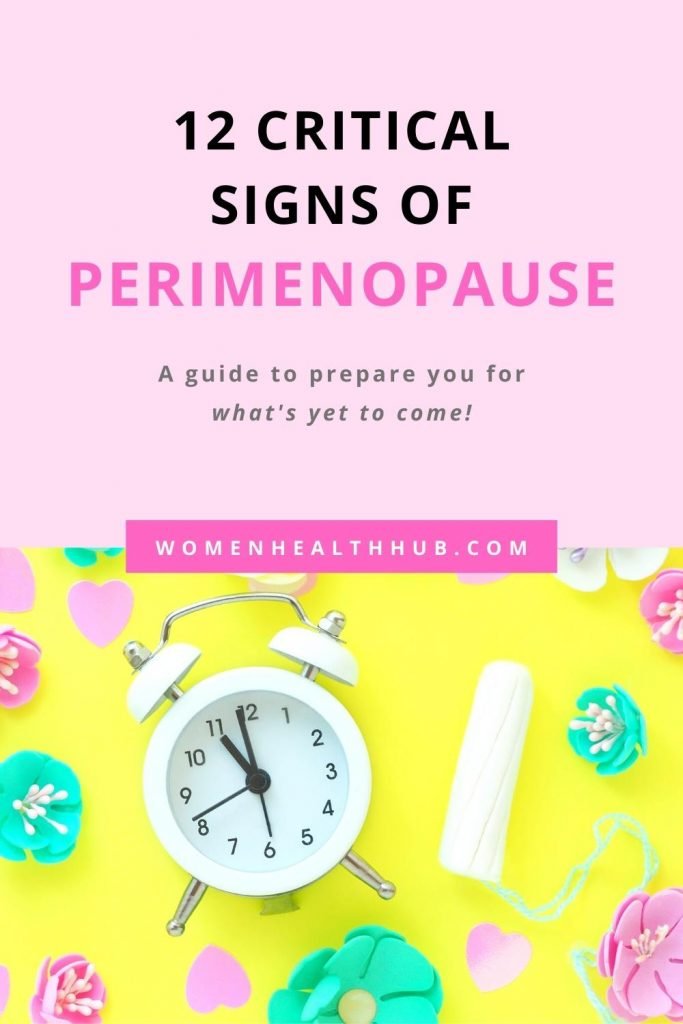
What Are The Early Signs of Perimenopause?
Watch out for these warning symptoms of perimenopause in your body as soon as you reach your mid 30s and 40s. More than 85% of women experience some of these signs of perimenopause:
1. Changes in Periods
One of the first signs of perimenopause is irregular periods. The unpredictable hormone imbalances during perimenopause lead to a disturbed reproductive system and monthly bleeding.
Most women notice menstrual changes at the age of 42 years.
In perimenopause, the ovary function becomes frustrating. It all depends on your estrogen levels.
You might either experience heavy or low bleeding for a long time or a few days. Each menstrual cycle could be a week late or reoccur after every 2 weeks. Sometimes the bleeding could go on for more than 10 days.
You may also have a no-period stage and skip a few months occasionally. Once you hit a gap of 60 days or 2 months between the cycles, it’s a clear early symptom of perimenopause.
*NEWS FLASH*
You’re perimenopausal! 🌸
Generally, women who have no periods for a year are menopausal.
Also, cramps, clotting, and heavy flow are common signs of perimenopausal period changes.
These menstrual changes are completely normal. But I advise consulting a doctor if;
- You notice any sudden spotting.
- The gap between each cycle shortens.
- Your periods last for more than a week.
- Your menstrual cycle resumes after a year of no bleeding.
Read More: 15 Must-have Foods for Instant Estrogen Boost
2. Breast Tenderness
Pain or breast soreness is also among the common signs of perimenopause. 1 in every 3 women experiences breast tenderness during perimenopause.
Usually, there’s a fluid buildup in breast muscles before you get your period. Once the cycle disturbance begins, breast soreness attacks at any time because of a spike in estrogen levels caused by hormonal imbalance.
Luckily, before the onset of menopause, breast pain disappears on its own.
You can massage with primrose oil at home to ease the tenderness. This oil is rich in fatty acids which helps reduce breast swelling and pain. Also, wearing comfy supportive bras alleviate the aches.
3. Hot Flashes
Hot flashes are bouts of sweating, redness, and heat flushes that last for about 30 seconds to 10 minutes. It’s among the most stressful signs of perimenopause, affecting 80% of women between the ages of 42 to 45.
These begin with an increase in temperature in the upper body and rapid heartbeat. Redness starts in the face and neck followed by blotches on arms and back. Heavy sweating is followed by sudden coldness.
Hot flashes might occur several times a day or at night. Their weekly or daily frequency varies from woman to woman. Night sweats can jolt you awake with profuse sweating and intense heat.
When they strike during the day, you might find it difficult to focus on daily routine tasks, such as attending a meeting or cooking.
Unfortunately, hot flashes are not just a symptom of perimenopause. Many women continue experiencing night sweats for 7 to 10 years, during and after menopause.
Read More: Night Sweats Increase Risk of Heart Diseases in Menopausal Women
4. Vaginal Dryness
Vaginal dryness and itchiness are also painful signs of perimenopause that last till you’re 50+ years.
Low estrogen thins down the tissues of the vagina causing irritation and itching. You might also have pain during intercourse because of decreased elasticity and lubrication of vaginal tissues. Some women might need to pee more often than usual.
The bad news is as painful as it feels, there are no permanent treatments for vaginal dryness. Several lubricants, moisturizers, and creams are available though, for short-term relief.
DON’T ignore it! 👵
5. Heavy Bleeding
Heavy bleeding is also among the usual signs of perimenopause at 42 to 45 years. About 1 in 5 women experience heavy blood flow.
It’s important to take this perimenopause symptom seriously as it leads to anemia, iron deficiency, and weakness. You may face difficulty doing everyday tasks. Fatigue often gives the feeling of passing out every time you stand.
Excessive blood loss can be tackled by drinking salted fluids and juices. Eating lots of iron-rich foods daily can also boost nutrition.
If heavy bleeding persists for an unusually long time, consult a doctor to control blood loss and prevent anemia.
Read More: 10 Serious Symptoms of Iron Deficiency You Might Have Ignored
6. Low Sex Drive
Because of hormonal changes and low estrogen levels, some women experience low sex drive, making it one of the most challenging signs of perimenopause.
As women reach the age of 45 years or more, they aren’t easily aroused and lose interest in intercourse. Low sex drive is also partly because of vaginal problems mentioned earlier.
Additionally, with age comes a lot of stress and responsibility, which further decreases the libido.
7. Sleep Problems
If you sleep peacefully the whole night but still wake up feeling tired, it may be one of the earliest signs of perimenopause.
Studies have shown that around 4 in 10 women face sleeping problems during and after perimenopause primarily because of night sweats and hot flashes.
Sometimes it’s difficult to fall asleep in the first place. And if you manage that then staying asleep is another challenge. If you wake up suddenly in the middle of the night, going back to REM could take hours!
That’s because, during perimenopause, there’s also a low production of progesterone (the sleep hormone) affecting your sleep cycle. Estrogen shortage itself can worsen insomnia.
Also, if you’re taking any meds, they can contribute to night-time restlessness too.
The best thing you can do is to create an optimal sleep environment. Make sure your room is cool. Invest in a supportive and breathable mattress. Drink chamomile tea before bedtime to induce relaxation.
Read More: Nightlights, Sleeplessness and High Breast Cancer Risk in Menopausal Women
8. Mood Changes
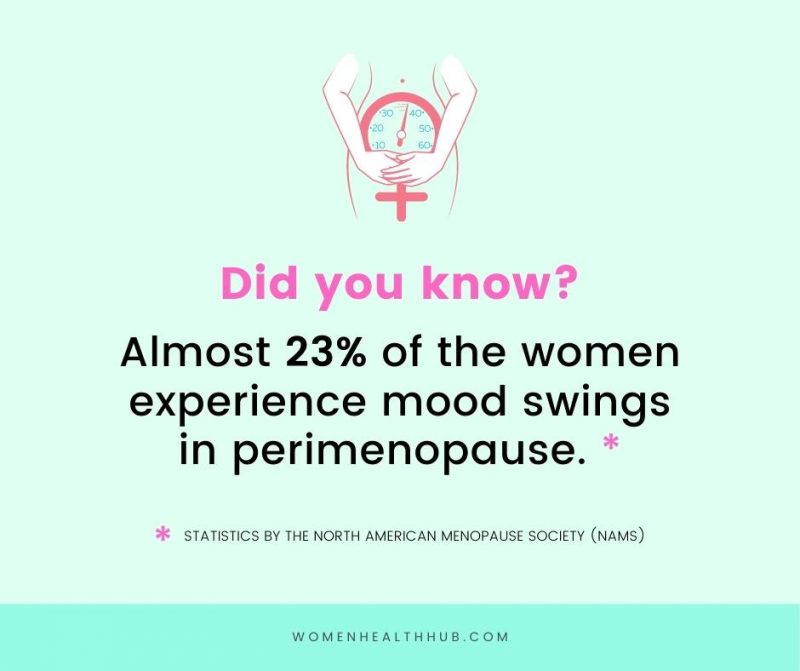
According to The North American Menopause Society (NAMS), 23% of women get mood swings during perimenopause. This is among the ugliest signs of perimenopause starting after 42 years.
You may feel depression and anxiety attacks often. Little things might irritate or make you cry. Sudden angry outbursts could leave you feeling frustrated and confuse others around you.
These mood changes are again owed to plummeting estrogen levels. Restless nights and fatigue further add to the struggle.
For many women, worries about the future and the inability to have intercourse can also contribute to this awful symptom of perimenopause.
So how can you deal with menopausal mood swings?
I’d recommend therapeutic activities such as journaling, yoga, meditation, and art therapy to regain control of your emotions.
Avoid overthinking about the future. Enjoy and cherish the little moments in your life. Spend time with your loved ones. Find a fulfilling hobby and stay active.
9. Bone Weakness
Bone loss is a scary symptom of low estrogen in perimenopausal women. It’s because the hormone imbalance reaches a point where new bones cannot replace the dissolving ones at the same rate.
The constant bone dissolution makes you prone to pain in the upper and lower back pain and joint aches in the knees and fingers. Ultimately, it could lead to osteoporosis and osteoarthritis — both being dangerous degenerative diseases.
Brittle and weak bones are among the first signs of perimenopause. However, there are several ways to mitigate the risk of osteoporosis after menopause.
With time, the disease causes severe inflammation in joints and makes it difficult to carry on with routine tasks.
The best thing you can do is regulate your calcium intake. Take calcium supplements and soak up Vitamin D daily under sunlight. Make sure you’re having sufficient dairy products rich in essential nutrients.
Up your calcium & vitamin D intake to avoid osteoporosis. 🙎♀️
Also, start regular exercise or yoga rituals. Various fitness and yoga pose target your bones, ensuring they remain strong and help prevent severe bone disorders.
Read More: 3-minute Daily Morning Beginner Yoga Ritual for Busy Women
10. Fatigue & Lethargy
Fatigue and tiredness are also some of the first signs of perimenopause that appear along with sleep problems and mood swings.
Tiredness is also related to hormonal changes. Estrogen, progesterone, thyroid, and adrenal hormone imbalance can wreak havoc on your energy levels. As a result, you may end up feeling tired and exhausted all the time.
Sleep deprivation further adds to the problem. Because of sleepless nights, you’ll be tired most of the mornings and not feel like getting up at all.
Exercising daily can help fight this serious early perimenopause symptom and give you loads of energy as soon as you wake up!
11. Bladder Problems
Bladder issues are among the signs of perimenopause that appear along with vaginal dryness. A decrease in estrogen leads to tissue loss around the vagina which increases the chances of urinary tract infections.
Some women also face difficulty holding in urine. This problem is called urinary or urge incontinence, caused by an overactive urinary bladder. You may feel an urge to pee more often or have uncontrolled peeing.
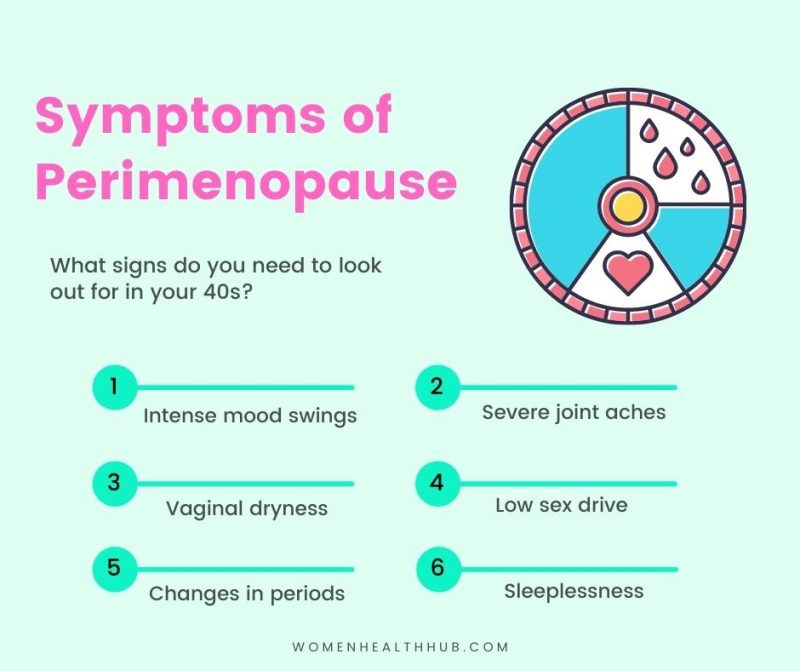
12. Memory Challenges
Perimenopause messes with your neurological abilities as well.
You might feel your learning and verbal memory dwindling with age, owing to hormonal changes.
The plummeting progesterone and estrogen hormone levels affect clear thinking and you may end up forgetting things. Many women report memory fogging such as forgetting important tasks or misplacing things during their perimenopause.
The best way to tackle it is by adding more brain-healthy foods to your diet. Play memory games and perform activities that engage your mind.
Is Perimenopause Normal? When Should You See A Doctor?
Perimenopause is a normal transitional phase during a woman’s aging process. Whether you need to see a doctor or not depends on the symptoms of perimenopause you’re experiencing.
If you notice any of the following serious signs of perimenopause, urgently consult a medical professional or gynecologist:
- Heavy bleeding or blood clots
- Short pan between menstrual cycles
- Spotting after period ends or sex
- Periods lasting for longer days
Additionally, women are at high risk of breast cancer during the perimenopausal phase.
Make sure you go for yearly health check-ups and get your annual mammograms. Don’t forget to do monthly self-exams of your breasts at home to look out for any breast cancer symptoms.
Read More: How to Do Your Breast Self-Exam at Home (Free Printable Guide)
Which Home Remedies Can Help Alleviate The Perimenopause Symptoms?
The most popular way to treat early menopause symptoms is Hormone Replacement Therapy or HRT. While HRT alleviates the signs of perimenopause effectively, it also has some health risks. Many women don’t feel safe getting hormone replacement therapy.
Luckily, many natural remedies are also used to ease early menopause symptoms. Here are some safe and proven home remedies for perimenopause symptoms:
- Ginseng
The roots of the Panax plant, known as Ginseng, have a relaxing effect and are often used as a sedative in many South Asian countries.
This edible root helps treat hot flashes and night sweats. It also regulates the sleep cycle. You can take it in capsule form or consume it as a tea.
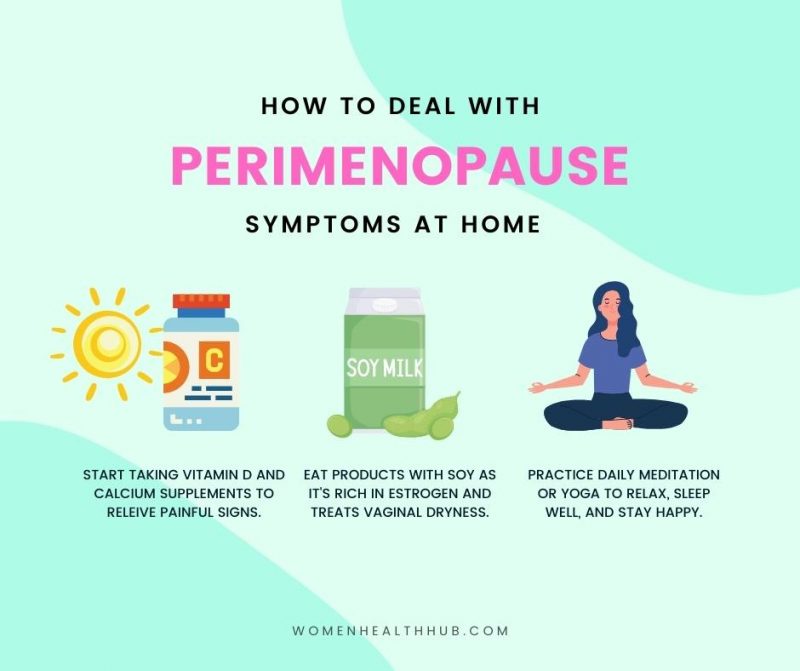
- Vitamin D & Calcium
Taking Vitamin D and calcium supplements not only helps to relieve perimenopausal symptoms in your 40s but also protects your bones from osteoporosis.
- Wild yam
You can also take wild yam supplements or topical extracts to treat signs of perimenopause. It has the same effect on our bodies as estrogen hormone therapy. This natural remedy for perimenopause symptoms has no side effects and is completely safe!
- Soy
Consuming soy products helps a lot with the struggles of this phase. It not only relieves hot flashes but also cures vaginal dryness.
- Yoga
Depending on what signs of perimenopause you notice, yoga can also induce mental relaxation and energize your body. Daily yoga helps with mood swings, sleep disturbance, and hot flashes.
I hope this article gave you sufficient info on what to expect from the perimenopause symptoms.
You may not experience all these signs of perimenopause at once. It’s also possible for every woman to have a unique experience.
My advice is to have a group of trusted and understanding women with you along this journey. Your support system will help lift and strengthen you when things feel hard during perimenopause and menopause. 🙂
References:
- https://www.ourbodiesourselves.org/book-excerpts/health-article/what-to-expect-perimenopause/
- https://www.health.harvard.edu/womens-health/perimenopause-rocky-road-to-menopause
- https://www.health.harvard.edu/womens-health/dont-ignore-vaginal-dryness-and-pain
- https://www.ncbi.nlm.nih.gov/pmc/articles/PMC4542113/
- https://www.ncbi.nlm.nih.gov/pmc/articles/PMC6082400/
- https://journals.plos.org/plosone/article?id=10.1371/journal.pone.0230515
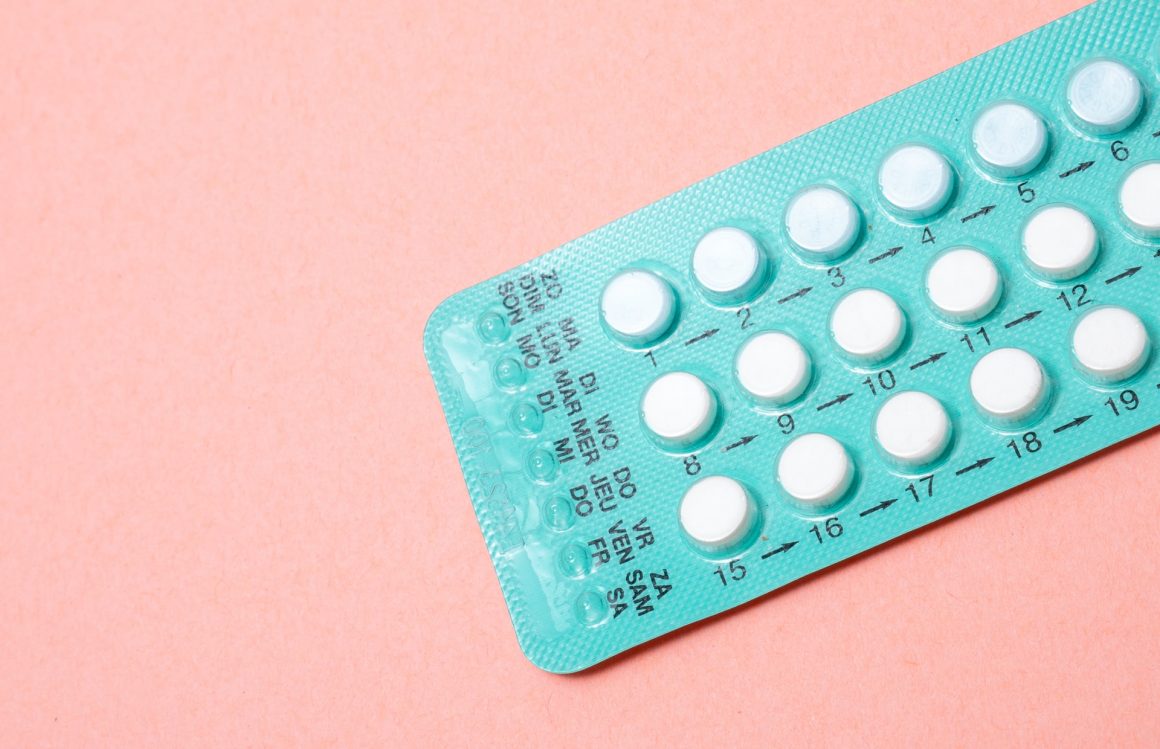



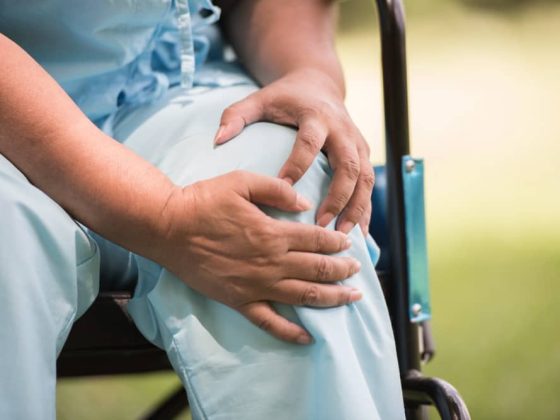

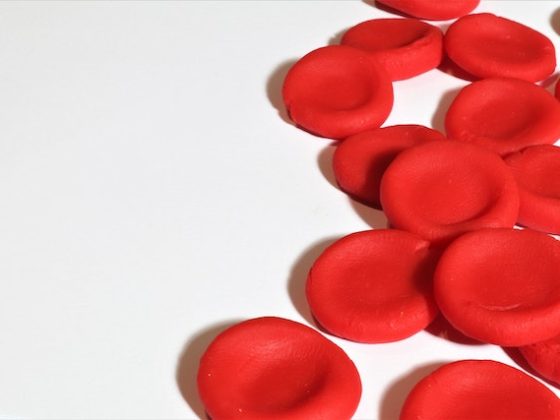


2 comments
Useful article, however, the use of the word peri-menopause and menopause have been mixed up in places. It needs read and checked before publishing.
Hi Fi, thanks for sharing your concern. Although every article on this website is published after a rigorous fact-checking and editing process, I still double-checked the post.
However, the article is entirely about the symptoms of perimenopause and not “menopause.” The only time the term menopause has been used is while referring to the early signs of menopause, which is another term for perimenopause (the time before menopause).
Hope this helps clear things up! If I’ve still missed something, please do highlight the concerned region and I’ll take a look. 🙂